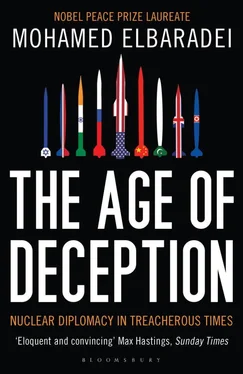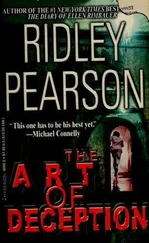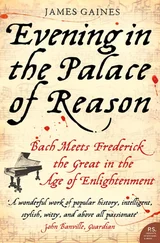While I waited for a word from Washington, two accusations began circulating: that I was hiding information incriminating to Iran in its pursuit of nuclear weapons; and that I had suppressed a secret analysis of Iran’s nuclear state of play by Agency inspectors. These accusations were tied to a strident behind-the-scenes push by the United States and the EU-3, starting as far back as late 2007, for me to publish a summary of Iran’s alleged weaponization studies in order to put pressure on Tehran.
The IAEA had shared with the Board whatever it could in relation to these alleged studies. In my May 2008 report, for example, I listed in detail the documents we had been permitted to show to Iran, including those related to the allegations of “green salt” production, high explosives testing, and the missile reentry vehicle. But I could not reach a verdict on these allegations, which, if proven, had the potential to spell the difference between war and peace—without first being able to verify the authenticity of the documents passed on by U.S. intelligence. Nor would I have done so with any other country.
In response to my reticence, I was now targeted by attacks claiming that I was more concerned with my legacy than with telling the truth. An Associated Press article wrote:
Mohamed ElBaradei is faced with the tough choice of sharing all his agency findings about Iran’s alleged arms programs, or leaving the decision to his successor later this year. The existence of a secret IAEA summary of Iran’s alleged weapons experiments based on agency investigations and U.S. and other intelligence was confirmed to The Associated Press over the past few days by three senior western diplomats from nations accredited to the IAEA, as well as a senior international official who follows the Iran nuclear issue. [6] “Outgoing IAEA Chief Has Tough Choice on Iran,” Associated Press, August 20, 2009.
An article in Haaretz , the Israeli daily, made much the same claims. [7] Barak Ravid, “Sources: UN Watchdog Hiding Evidence on Iran Nuclear Program,” Haaretz , August 19, 2009.
An editorial the same day said that I had, for years, intentionally downplayed evidence of Iran’s nuclear program “by using vague language and barely comprehensible jargon intending more to conceal than to reveal.” It also implied that Olli and I were in sharp disagreement over whether such information should be published:
It is no secret that Heinonen does not see eye to eye with his boss. There have been many cases in which he would have preferred the reports to use clear, unequivocal language, and he has said so periodically. But like any good diplomat, he accepts ElBaradei’s decisions, even if with gritted teeth. [8] Yossi Melman, “Israel, U.S. Lost Faith in IAEA Long Ago,” Haaretz , August 19, 2009. In October 2010, two months after Olli Heinonen retired from the IAEA, he gave an interview to Haaretz in which he addressed the rumors that our relationship had been tense: “It is true that we had some arguments. And it is true that there were some at the organization who tried to drive a wedge between us by spreading rumors. I am a technical person, and [Mohamed] deals on the diplomatic-political level. Sometimes there was disagreement between us regarding the timing and the course to take; but, in fact, none of these arguments and differences of opinion did any harm to the agency’s mission of reporting what we saw.” Yossi Melman, “Behind the Scenes of UN Nuclear Inspection of Iran,” Haaretz , October 22, 2010.
At the crux of these accusations was the willingness, on the part of Israel and the West, to treat allegations as fact. The alleged studies were, in truth, an unprecedented challenge for the Agency. We were equipped to verify operations involving the use of nuclear material, where we could establish the facts through measurements and environmental sampling. We did not have the tools or expertise, however, to verify the authenticity of documents.
The second part of the media accusations, what the Associated Press called the “secret IAEA summary,” referred to an internal analysis, a rolling text compiled by the Agency’s Department of Safeguards that included all the various pieces of information that had come in from different intelligence organizations, most of which IAEA inspectors had been unable to verify or authenticate. As such, by definition it was a series of best guesses, as if to say, “If all these claims were true, what would they mean?” It was not something that Olli Heinonen, head of the safeguards department, had assessed, signed off on, or even suggested for inclusion in my Board reports. Nor had it been vetted by relevant IAEA offices responsible for other dimensions of safeguards verification—legal and policy aspects, for example.
Providing this kind of preliminary analysis to the Board would have gone against every principle of due process and would have lent an aura of credibility to unverified accusations. The key missing ingredient—for which we had been pressing for months—was the ability to corroborate the allegations. The critical information on which the analysis was based was all paperwork. We had no “green salt” to examine, no components to inventory or trace, no high explosives tunnels or missile reentry vehicles to measure or inspect.
Absurdly, we were limited with regard to what documentation we were permitted to show Iran. I constantly pressed the source of the information to allow us to share copies with Iran. How can I accuse a person, I asked, without revealing the accusations against him? The intelligence crowd refused, continuing to say they needed to protect their sources and methods.
Iran, for its part, continued to dismiss most of the allegations as fabrications. Since the Iranians’ cooperation on the work plan had been rewarded with yet more Security Council sanctions, their cooperation on the alleged weaponization studies had been minimal. Their predicament, they said, was that proving the studies were unrelated to nuclear activities would expose a great deal about their conventional weaponry, particularly their missile program. They suspected this was what some of the inspectors were after. The inspectors, of course, rebuffed this line of reasoning.
Was this really the reason for the Iranians’ reticence? Or were they intent on hiding something because the timing was not right for a confession? Or was it a combination of both? I could not tell. It was undeniably frustrating to be caught in the middle, unable to get to the bottom of the issue. I continued to press both sides, but no one was budging.
In the late summer of 2009, the Israelis provided the IAEA with documents of their own, purportedly showing that Iran had continued with nuclear weapon studies until at least 2007. Unlike with the U.S. intelligence, the Israelis said we could share these documents with Iran, with no restrictions about protecting their sources. The Agency’s technical experts, however, raised numerous questions about the documents’ authenticity, and we sent Israel a list of questions. [9] The accuracy of these accusations has never been verified; however, it is significant that the conclusions of the U.S. National Intelligence Estimate were not changed, indicating that they, at least, did not buy the “evidence” put forward by Israel.
From what I could tell, Israel’s purpose in bringing these allegations to the IAEA was threefold. First, they wanted to contradict the conclusion of the December 2007 U.S. National Intelligence Estimate, which said that Iran had halted its nuclear weapons program in 2003, but they could not publicly undermine the United States, so the IAEA was the most credible secondary vehicle. Second, they wanted to exert pressure on China and Russia to agree to tighten the sanctions on Iran. Third, and most worrisome, they wanted to create the impression that Iran presented an imminent threat, perhaps preparing the grounds for the use of force. [10] In January 2011, the outgoing Mossad chief Meir Dagan said he did not believe that Iran would have a nuclear weapon for at least another four years. Yossi Melman, “Outgoing Mossad Chief: Iran Won’t Have Nuclear Capability Before 2015,” Haaretz , January 7, 2011.
Читать дальше












